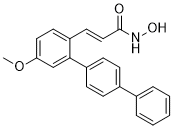While often used to detect or guide the  treatment of acute sepsis, there have been few efforts linking CRP level at a stable phase of health with risk of future sepsis events. As with AbMole Oleandrin cardiovascular disease, if baseline CRP levels were associated with future sepsis events, this finding could motivate strategies to mitigate disease severity or mortality, or to prevent the onset of the condition. The objective of this study was to determine the association between baseline high-sensitivity CRP and future risk of sepsis in community-dwelling individuals. We considered covariates correlated with hsCRP including sociodemographic characteristics, health behaviors and chronic medical conditions. Sociodemographic characteristics included age, sex, race, geographic region, self-reported annual household income and self-reported education. Geographic region was defined as participant residence in the stroke ��buckle,�� stroke ��belt,�� and elsewhere. Because REGARDS did not collect information on pulmonary conditions such as asthma and chronic obstructive pulmonary disease, we defined participant use of pulmonary medications as a surrogate for chronic lung disease. Obtained from each participant’s medication inventory, pulmonary medications included beta agonists, leukotriene inhibitors, inhaled corticosteroids, combination inhalers, and other pulmonary medications such as ipratropium, cromolyn, aminophylline and theophylline. We also identified statin use through the participant’s medication inventory. Elevated hsCRP levels detected using high-sensitivity assay techniques have been associated with risk of cardiovascular disease, stroke and all-cause mortality. In this study of individuals in the REGARDS cohort, we found that elevated baseline hsCRP was associated with increased risk of future sepsis events. This finding suggests that knowledge of hsCRP level could help to identify individuals at increased risk for sepsis. There are plausible pathophysiologic connections between elevated baseline hsCRP and future sepsis events. CRP is believed to activate complement, interact with cell surface receptors, induce a prothrombotic state, increase expression of inflammatory mediators, and upregulate endothelial cell adhesion molecules, among other actions. Many of the same inflammatory processes also play key roles in sepsis. For example, we previously identified associations between inflammatory and endothelial activation biomarkers and future sepsis events. Collectively, these observations suggest that elevated hsCRP may signal individuals with a chronic low-grade proinflammatory state and prone to the hyperinflammatory state characteristic of sepsis. An important question requiring additional study is whether hsCRP exerts a direct effect upon sepsis susceptibility or represents a marker of the inflammatory process that is causal in increasing sepsis risk. Prior studies have examined the association between CRP levels and infection risk.
treatment of acute sepsis, there have been few efforts linking CRP level at a stable phase of health with risk of future sepsis events. As with AbMole Oleandrin cardiovascular disease, if baseline CRP levels were associated with future sepsis events, this finding could motivate strategies to mitigate disease severity or mortality, or to prevent the onset of the condition. The objective of this study was to determine the association between baseline high-sensitivity CRP and future risk of sepsis in community-dwelling individuals. We considered covariates correlated with hsCRP including sociodemographic characteristics, health behaviors and chronic medical conditions. Sociodemographic characteristics included age, sex, race, geographic region, self-reported annual household income and self-reported education. Geographic region was defined as participant residence in the stroke ��buckle,�� stroke ��belt,�� and elsewhere. Because REGARDS did not collect information on pulmonary conditions such as asthma and chronic obstructive pulmonary disease, we defined participant use of pulmonary medications as a surrogate for chronic lung disease. Obtained from each participant’s medication inventory, pulmonary medications included beta agonists, leukotriene inhibitors, inhaled corticosteroids, combination inhalers, and other pulmonary medications such as ipratropium, cromolyn, aminophylline and theophylline. We also identified statin use through the participant’s medication inventory. Elevated hsCRP levels detected using high-sensitivity assay techniques have been associated with risk of cardiovascular disease, stroke and all-cause mortality. In this study of individuals in the REGARDS cohort, we found that elevated baseline hsCRP was associated with increased risk of future sepsis events. This finding suggests that knowledge of hsCRP level could help to identify individuals at increased risk for sepsis. There are plausible pathophysiologic connections between elevated baseline hsCRP and future sepsis events. CRP is believed to activate complement, interact with cell surface receptors, induce a prothrombotic state, increase expression of inflammatory mediators, and upregulate endothelial cell adhesion molecules, among other actions. Many of the same inflammatory processes also play key roles in sepsis. For example, we previously identified associations between inflammatory and endothelial activation biomarkers and future sepsis events. Collectively, these observations suggest that elevated hsCRP may signal individuals with a chronic low-grade proinflammatory state and prone to the hyperinflammatory state characteristic of sepsis. An important question requiring additional study is whether hsCRP exerts a direct effect upon sepsis susceptibility or represents a marker of the inflammatory process that is causal in increasing sepsis risk. Prior studies have examined the association between CRP levels and infection risk.